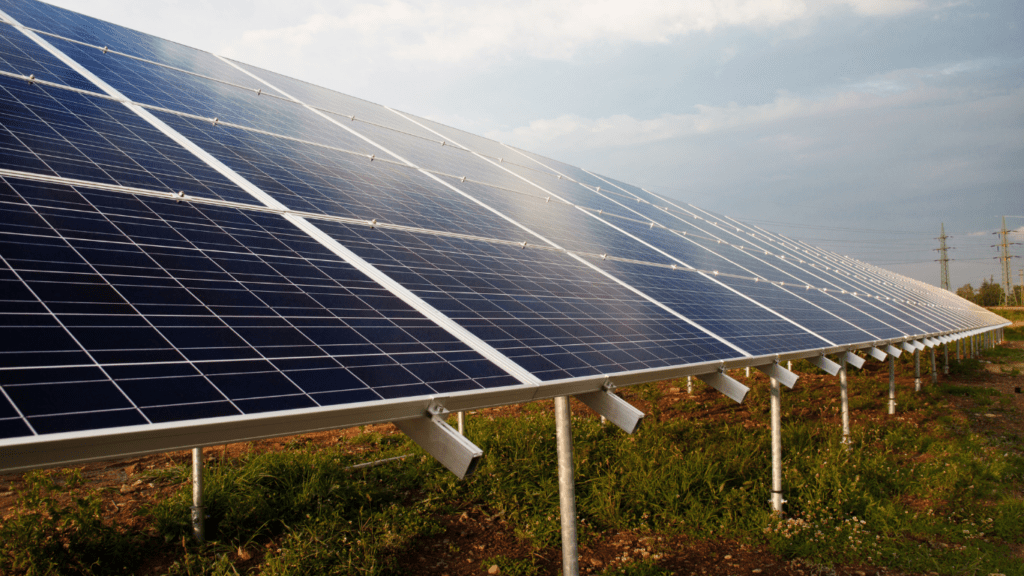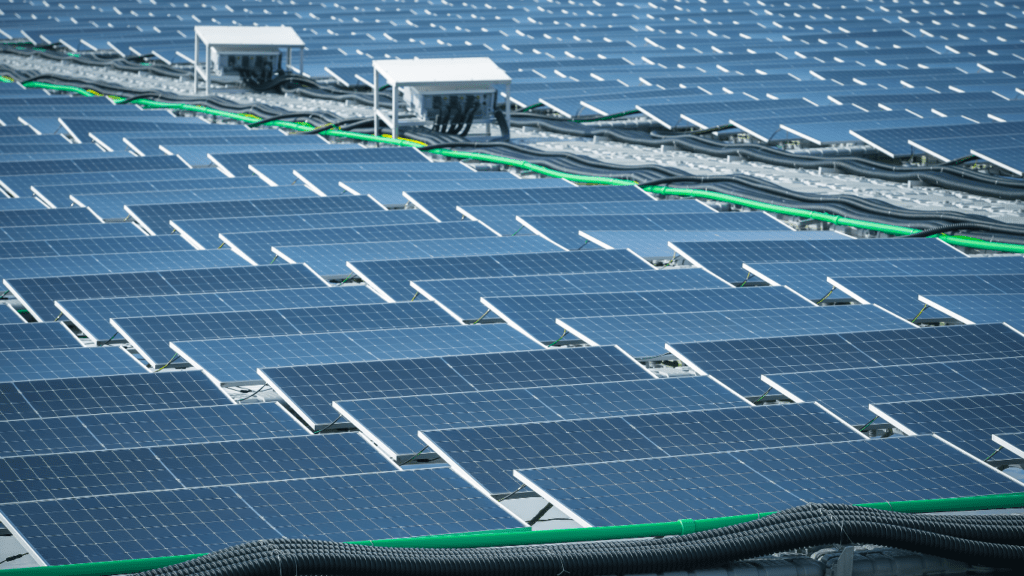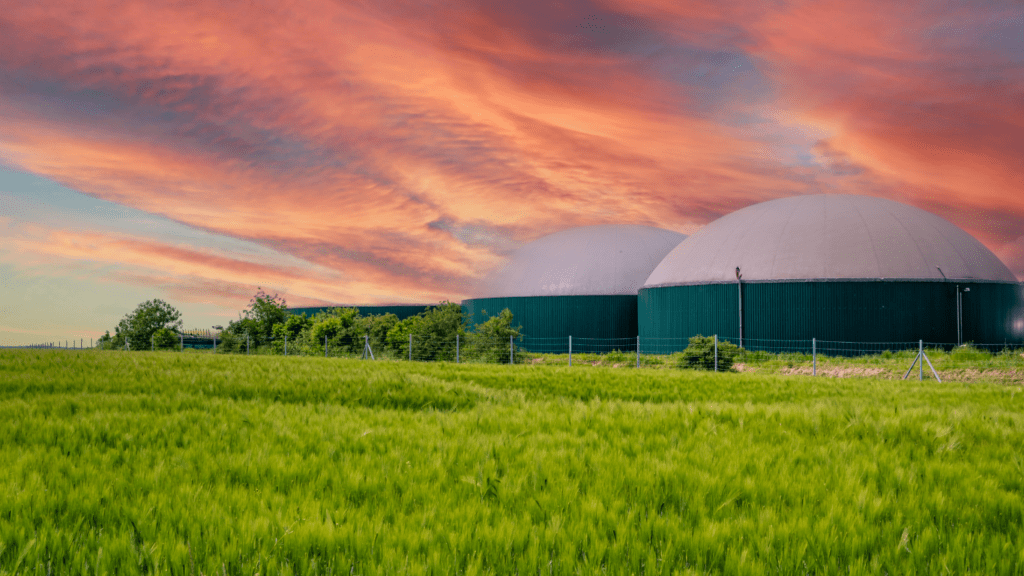Understanding Solar Panels
Solar panels, or photovoltaic (PV) panels, convert sunlight into electrical energy. They consist of many solar cells made from silicon, a semiconducting material. When sunlight hits these cells, it generates direct current (DC) electricity. This electricity then passes through an inverter, transforming it into alternating current (AC) electricity, usable in homes and farms.
Efficiency varies among different types of solar panels. Monocrystalline panels offer the highest efficiency, around 20%, and have a longer lifespan. Polycrystalline panels are slightly less efficient but cost less to produce. Thin-film panels, while flexible and lightweight, have the lowest efficiency rates.
Solar panel systems include more than just panels. A complete setup involves inverters, mounting systems, and batteries for energy storage if off-grid use is needed. Inverters are essential as they convert DC electricity generated by the panels into AC electricity. Mounting systems ensure the panels face the sun optimally throughout the day.
Maintenance requirements for solar panels are minimal. Regular inspections to clean dirt or debris and ensure connections remain secure suffice to keep the system running efficiently. Many panels have warranties lasting 20-25 years, ensuring reliable long-term performance.
Integrating solar panels into agricultural operations proves beneficial. They provide renewable energy, reducing reliance on fossil fuels and decreasing operational costs. This technology aligns with sustainable farming practices by lowering carbon footprints and promoting environmental health.
Integration of Solar Panels in Agriculture
Incorporating solar panels into agricultural practices offers numerous benefits. Farmers can harness renewable energy to improve efficiency and sustainability.
Energy Generation and Savings
Solar panels empower farmers to generate their own electricity. This self-sufficiency curtails energy bills and hedges against rising utility costs. For instance, a 5-acre farm outfitted with a solar system can produce enough power to offset electricity needs, reducing annual costs by up to $2,500.
Enhancing Crop Production
Solar energy facilitates controlled environment agriculture. Greenhouses powered by solar panels benefit from consistent, uninterrupted energy. For example, automated systems for lighting and irrigation optimize growing conditions, enhancing both crop quality and yield.
Livestock Management
Solar panels improve livestock management by powering essential equipment. Solar-powered water pumps ensure a steady water supply, even in remote locations. Barns can use solar energy for climate control, providing a healthier environment for livestock and reducing stress and illness.
Types of Solar Panels Used in Agriculture

Solar panels play a critical role in modern agriculture, offering diverse solutions to meet various needs. Two main types are prominently used.
Photovoltaic Panels
Photovoltaic panels, or PV panels, convert sunlight directly into electricity using semiconductor materials. Farmers use these panels to power irrigation systems, greenhouses, and farm equipment.
Traditional solar farms with PV panels are common, providing reliable energy solutions for large-scale agricultural operations. Thin-film and monocrystalline PV panels are examples, with thin-film being flexible and lightweight, and monocrystalline offering high efficiency and durability.
Agrivoltaic Systems
Agrivoltaic systems integrate solar power generation with crops. These systems involve installing solar panels above crops, allowing land to be used for both farming and energy production.
The panels provide shade, reducing water evaporation and protecting plants from extreme weather. Crops like:
- lettuce
- tomatoes
which thrive in partial shade, benefit significantly from these systems. Agrivoltaic setups enhance land productivity, making them an appealing option for farmers looking to maximize their resources.
Benefits of Using Solar Panels on Farms
Solar panels on farms offer several transformative benefits. They improve environmental sustainability, reduce operational costs, and promote energy independence.
Environmental Impact
Solar panels reduce greenhouse gas emissions by providing clean, renewable energy. They decrease reliance on fossil fuels, which emit carbon dioxide and other pollutants. By using solar energy, I can minimize the farm’s carbon footprint and conserve natural resources.
Agrivoltaic systems, which integrate solar panels with crops, also improve land productivity. They shield crops from harsh weather, reducing water usage and soil erosion. This method promotes biodiversity, as plants grow better under moderated conditions. Using solar panels, I can foster a healthier ecosystem and support sustainable farming practices.
Economic Advantages
Solar panels significantly cut energy costs on farms. The initial investment in solar technology can be substantial, but it pays off in the long run. Farms generate their own electricity, lowering utility bills and operational expenses. With state and federal incentives, I can reduce the upfront costs.
Additionally, excess energy generated can be sold back to the grid. This not only provides an additional revenue stream but also ensures no energy goes to waste. Improved energy efficiency and reduced costs enhance farm profitability. Utilizing solar panels supports financial stability and promotes sustainable growth.
Challenges and Solutions
Implementing solar panels in agriculture offers numerous benefits but also presents several challenges and solutions.
Initial Investment and Maintenance Costs
High initial investment costs can deter farmers from adopting solar panel systems. Equipment procurement, installation, and setup can be expensive.
For example, a typical 10kW solar system costs around $20,000-$30,000. However, federal tax credits, state incentives, and grants can alleviate some financial burdens. Over time, reduced energy bills and the ability to sell excess energy back to the grid help recover these initial costs.
Maintenance costs pose another challenge. Regular cleaning, inspection, and occasional repairs are necessary. Costs vary depending on system size and location but generally range between $150-$330 each year. Farmers can mitigate maintenance costs by entering service contracts with providers, ensuring that systems operate efficiently.
Technological Barriers
- Technological barriers also hinder the widespread adoption of solar panels in agriculture. Some regions lack adequate solar irradiance, reducing energy output.
- Innovations in solar technology, such as bifacial panels or tracking systems that follow the sun, help increase energy efficiency in low-irradiance areas.
- Another barrier is the integration of solar panels with existing farm operations. Ensuring seamless integration requires advanced planning and potentially modifying current infrastructures.
- Smart grid technologies and energy storage solutions are evolving, allowing better adaptation of solar systems to agricultural needs.
- Integrating Internet of Things (IoT) devices can optimize energy usage and monitor system performance more effectively.



